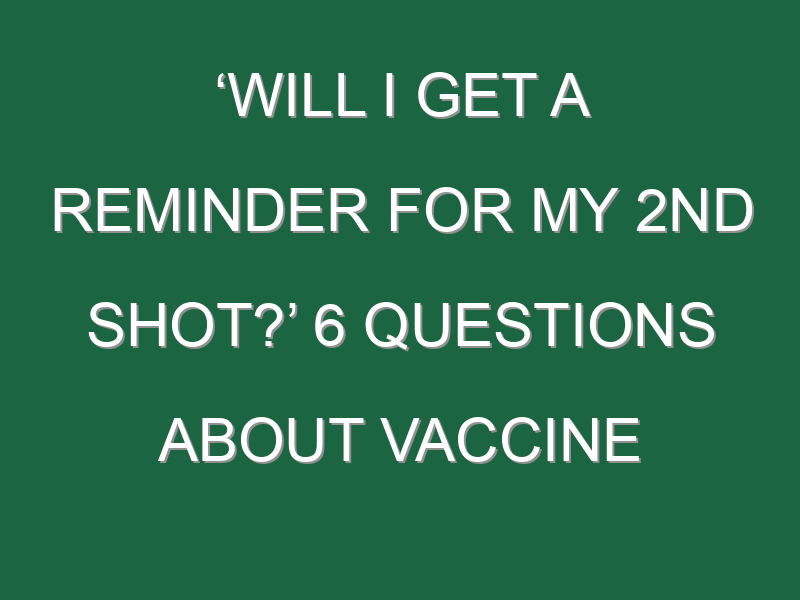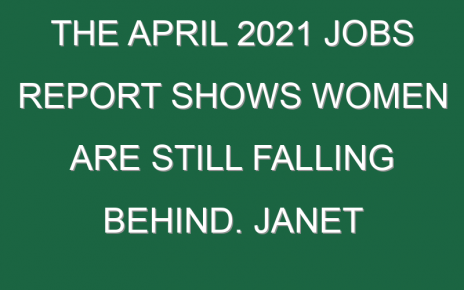As U.S. health officials try to get COVID-19 vaccines to people more quickly, it’s already time for some people to get their second shots.
So who’s keeping track to make sure you get the correct second dose, and on time? And who can see that information?
It’s one of the many logistical issues health officials have been sorting out to pull off the country’s largest vaccination campaign. The first COVID-19 vaccines available in the U.S. require two doses taken weeks apart. Other vaccines in the pipeline might not require two doses, but the record keeping for those would work the same way.
Subscribe to The Capsule, a daily brief monitoring advances in health care and biopharma, delivered free to your inbox.
Here’s a look at how vaccinations are being tracked.
What’s needed for my first shot?
Once vaccines become widely available in coming months, the pharmacy, health clinic or doctor’s office where you get your shot will ask for basic information, such as your name, date of birth and gender.
You might also be asked for other information, such as your race and any health condition that could put you at higher risk for a severe case of COVID-19. But exactly what you’re asked about will vary depending on where you go.
The shots are free, but you’ll likely be asked for your insurance information if you have it.
Will I get a reminder for the second shot?
You’ll get a vaccination record card that says when and where you got your first shot, and what kind it was. Pharmacies, clinics and doctor’s offices will also likely send reminders, including by text, email or phone.
The timing doesn’t have to be exact. The Pfizer doses are supposed to be three weeks apart, and the Moderna doses four weeks apart. But the CDC notes that doses given within four days of those milestones are fine.
Will there be a record of my vaccination?
Providers should have a record of your vaccination in their systems. They’ll also be entering the information into existing state or local immunization registries, which are used to record childhood and other vaccinations. That will include details like which vaccine you got, and when.
So if you go to a pharmacy in another part of town for your second shot, they should be able to look up the details of your first.
To give health officials a national picture of vaccination efforts, those local registries will also be feeding information to the U.S. Centers for Disease Control and Prevention.
What is being shared with the CDC?
That’s been a sticking point.
The CDC wanted information including names, dates of birth and gender of people vaccinated from local health officials.
But many states pushed back, citing privacy concerns, and were still hammering out their data-sharing agreements with the CDC in the final weeks before the first vaccine shipments went out.
Jon Reid, manager of the vaccine registry in Utah, said he expected most states to send data with personal information removed. But exactly what’s shared could vary.
“We have our own state laws that we need to be consistent with,” said Kevin Klein, director of Colorado’s division of homeland security and emergency management.
Philadelphia said it agreed to report ages, for example, but not birth dates or names.
“We are going to send them what we think is appropriate,” said Aras Islam, manager of the city’s vaccine registry. But he said he expects to hear back from the CDC on the issue as vaccinations expand.
The CDC had also wanted information on people’s race and ethnicity. But some providers aren’t set up to collect that information and the information isn’t required, said Mitchel Rothholz of the American Pharmacists Association.
Philadelphia says it’s asking providers to enter data on race and ethnicity if they can, and sharing that with the CDC. The city says about 80% of cases so far include that information and that the percentage is expected to climb.
Why does the CDC want my vaccination information?
Federal officials say they need data to track vaccination efforts nationally and to identify regions or groups that might need more shipments.
To do that, the CDC says it will feed data without identifying details into a program called Tiberius, which is made by Palantir and is also being used to track COVID-19 hospitalizations under a different name. It’s not yet clear what insights the program will be able to offer, given the changes states made to their data use agreements.
“There will be some data variability, and we’re working through that analysis right now,” Col. R.J. Mikesh, the technology lead for the federal government’s COVID-19 vaccine development push, said previously.
HHS officials haven’t detailed what information they plan to make public, and when.
How will data be protected?
Vaccination information from states and cities will go into a CDC data repository called the COVID-19 Clearinghouse, which will “encrypt and store” the information, according to a data agreement sent to states.
The agreement says the CDC will “take all reasonable measures to secure” the data, and that the agency wouldn’t be able to access any personally identifiable information without the permission of local jurisdictions. Federal health officials have said the data could also be useful if people happen to be in another part of the country for the second shot.
But without more details on how data might be secured, Islam in Philadelphia said the city opted to share information without any identifying information.
More health care and Big Pharma coverage from Fortune:
- The biggest conspiracy theories of 2020 (and why they won’t die)
- Timeline: From the first coronavirus cases to the first vaccinations
- Trump hyped Verily’s coronavirus testing tool. It led to less than 1% of all tests in 2020
- Commentary: Cracking the code of biological aging could solve America’s health care crisis
- Data delays aren’t slowing the global rollout of a Chinese COVID-19 vaccine





